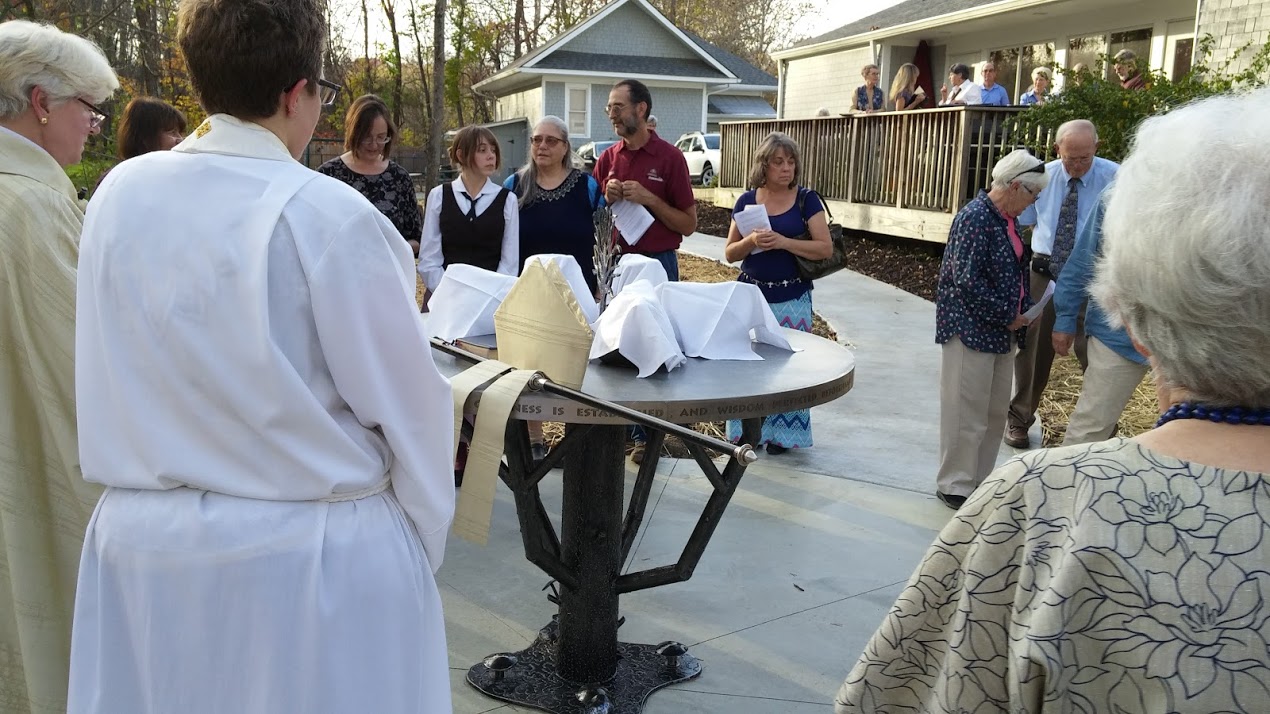
Inscribed on the edge of the altar: It is for you that paradise is opened, the tree of life is planted, the age to come is prepared, plenty is provided, a city is built, rest is appointed, goodness is established and wisdom perfected beforehand. — 2 Esdras 8:52
The Chapel Garden
- A quiet place to rest, pray, and reflect on the lives of friends, family, and loved ones who have gone before us.
- Use of native and local materials to blend in with the rest of the parish, the county, and the inherent beauty of all God’s creation.
- Accessible pathways from the church and to future prayer/meditation paths on the property.
- A sacred space where cremains of the deceased may be scattered or interred together in the Commonbarium.
- An outdoor space with seating which invites personal meditation and may also be used for communal prayer and worship.
The Commonbarium
- The focal point of the Chapel Garden to inspire and encourage prayer and meditation.
- A derivation of the word “columbarium” designating it as a place where the cremains of the deceased are interred but rather than individually, together in a common resting place. The design is based on “tree of life”, “Eucharistic”, and “vine and branches” imagery found in scripture and tradition. From Christ the vine/trunk, spring the four limbs of the gospels which, in turn, each branch through three arms (of the Trinity) into the twelve apostles who carried the Good News to the ends of the earth. They provide the supports for the altar on which our Eucharistic liturgy takes place.
- During interments, the cremains pass through the trunk via a securable lid to a common underground resting place reminding us that it is through Christ that we pass from death to new life and that God will bring us all together again in the heavenly kingdom to join at the heavenly banquet.
- As an altar for funeral and Eucharistic liturgies or other communal worship, it is a gathering place for the communion of the saints.
Policies of Use
Please see this document for St. David’s Chapel Garden usage policies.


